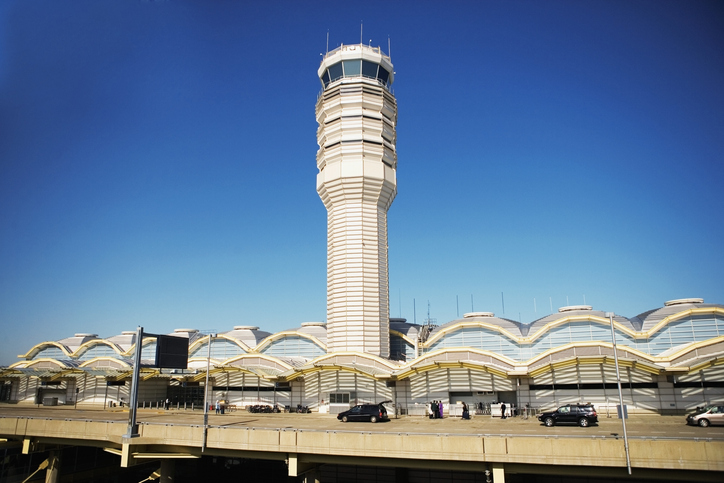The Monthly Metric: Time to Awareness and Resolution

As this space has discussed often in the last two years, perhaps no element of supply management has been impacted by the coronavirus pandemic more than inventories — and most organizations are striving to improve visibility and decision-making with their stocks.
Among those initiatives is development or enhancement of a control tower of inventory and other supply chain metrics, says Marco Sandrone, senior research director with the supply chain practice at Gartner, the Stamford, Connecticut-based global business research and advisory firm. “It is becoming more of a priority for businesses to put together this capability for the procurement organization, as well as logistics and transportation,” he says.
While control towers are more prevalent in companies’ supply chain operations, the metrics — in Gartner’s dashboard blueprint, leading or diagnostic measurements that identify issues and root causes, and lagging or outcome gauges of service, cost and cash (inventory) — are largely unchanged, Sandrone says. However, he adds, two leading metrics are not on many control tower dashboards but should be: time to awareness and resolution.
Many organizations lack the “digital dexterity,” Sandrone says, to use them as diagnostic measurements. Also, since organizations have their own response processes, the metrics have no consensus definitions and benchmarks. However, they are among the most critical gauges: The longer it takes to be aware of a problem like a supplier delay or manufacturing asset failure, the longer it takes to resolve it, increasing the chances of a stockout.
“You need to have clear data that allows you to monitor the process out at a granular level,” Sandrone says. “And then you need to have clear responsibility to know exactly who is to be made aware, as well as the person or the team that needs to respond. This process doesn’t happen that often, as many organizations find it easier to monitor lagging metrics like overall service level and order cycle time because they are comfortable with them.”
Meaning of the Metrics
A supply chain control tower is, according to Gartner’s definition, a “concept that results in combining people, process, data, organization and technology” that captures and uses “close to real-time operational data from across the business ecosystem to provide enhanced visibility and improve decision-making.”
Gartner researchers have found that companies use control towers most for (1) logistics and transportation and (2) end-to-end supply chain processes. “A control tower (provides) a detailed, operational type of metrics,” Sandrone says. “Companies talk about having an end-to-end (control tower), but we rarely see one that has a proper control tower solution that covers all the different functions for an organization.”
Among the outcome metrics that measure past performance include on-time delivery and cycle time; capacity utilization and time to ship are analytics alongside time to awareness and resolution on the diagnostic roster. Time to awareness is defined as how long a supply management organization takes to address a problem or system failure, and time to resolution is how long before the situation is corrected.
A company’s time to awareness/resolution deadlines can be measured in two ways, Sandrone says: (1) adherence to a defined process. “If, for example, the target is 30 minutes to acknowledge an emergency order, it’s a ‘hit’ if the response occurs in that time and a ‘miss’ if it takes longer. If there are multiple events over a period of time, you can calculate the average time to respond.” He adds, “Resolution of the problem is a little more (critical), where you might have a different time line, because it’s to avoid a big impact.”
Again, there are no industry-wide benchmarks, so Sandrone says proper time to awareness and resolution depends on the complexity of the situation and response. However, he says, time to awareness typically should not take more than a day, and time to resolution can take from hours to weeks.
The Impact on Outcome Metrics
How an organization defines — and sets its benchmarks for — time to awareness and resolution depends on its level of maturity and digitization, Sandrone says. An organization with a sound control tower should not rely on outcome metrics or an unexpected event to find signs of a supplier delay or manufacturing asset failure, he adds.
Once an alert is generated, time to resolution is a three-step process: (1) quantify the impact of the disruption on service level, inventory and/or revenues, (2) develop response scenarios like alternative sourcing or use of safety stock from an alternative site and (3) confirm and execute the solution. It’s been said that time to resolution can also be classified as “time to money,” because a slow response can become evident in outcome metrics measuring costs and customer service.
Time to resolution can me most valuable in the aftermath, Sandrone says. A supply management organization’s post-disruption debriefing should include analysis and discussion of why the response took the length of time it did.
“What were the root causes for the problem to take so long to be resolved? Is it because there was an issue with the alert system, so the problem didn’t get flagged?” he says. “Was it an internal problem, where the alert got flagged, but the organization had several alerts to look at? Was there a problem in understanding the solution, or did the organization lack the capability to implement it?”
Sandrone concludes, “In this process, we see how time to awareness and resolution are leading KPIs: Awareness is the initial must-have step, and resolution can help an organization break down the elements that lead to the outcome.”
To suggest a metric to be covered, email me at dzeiger@ismworld.org.



